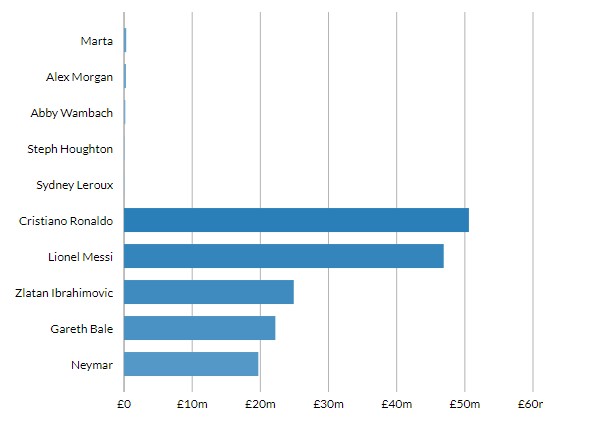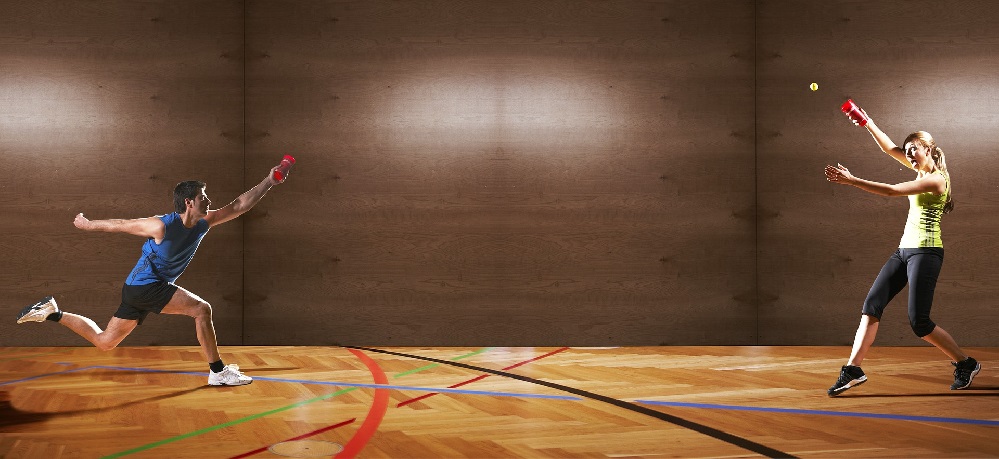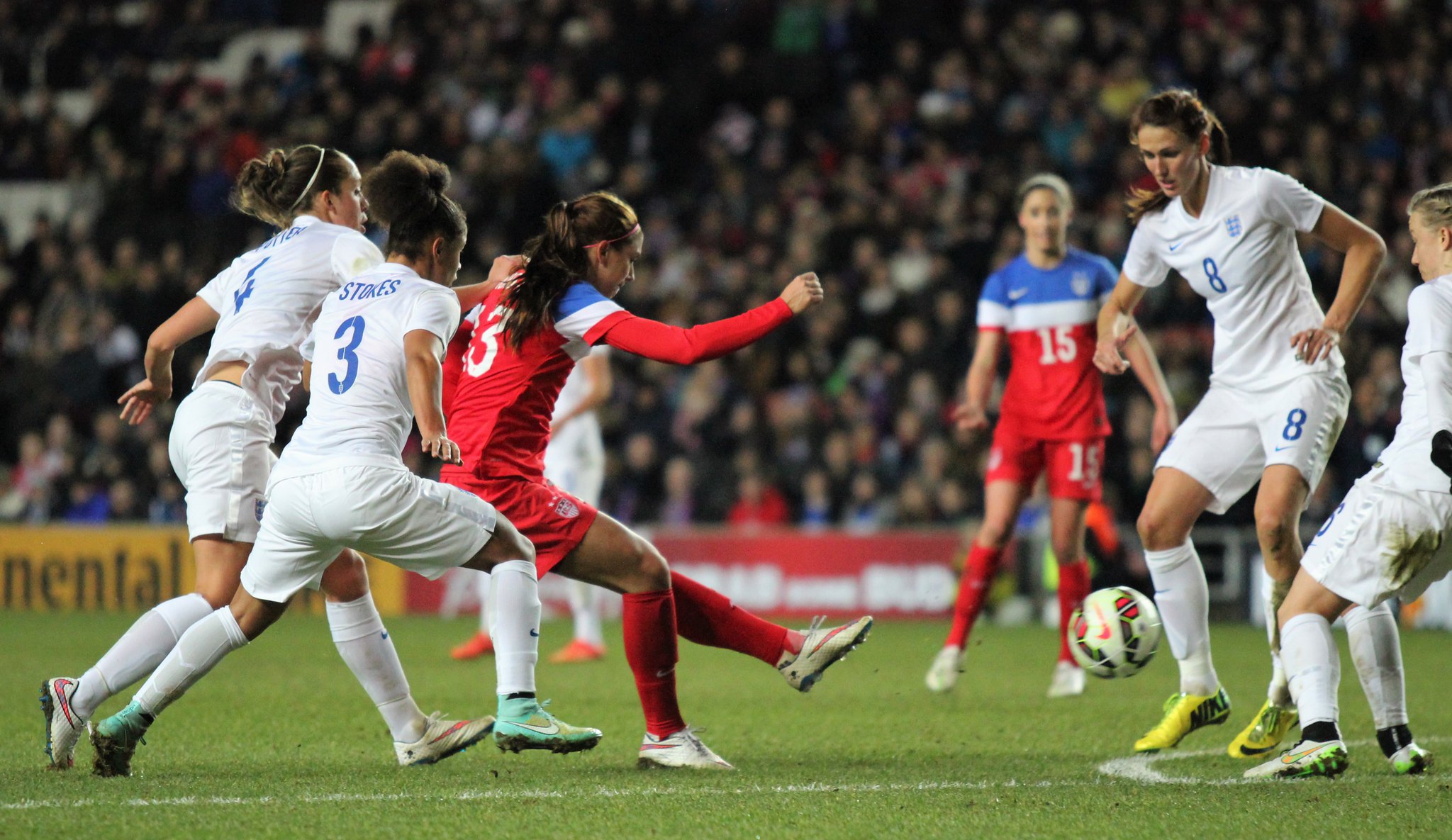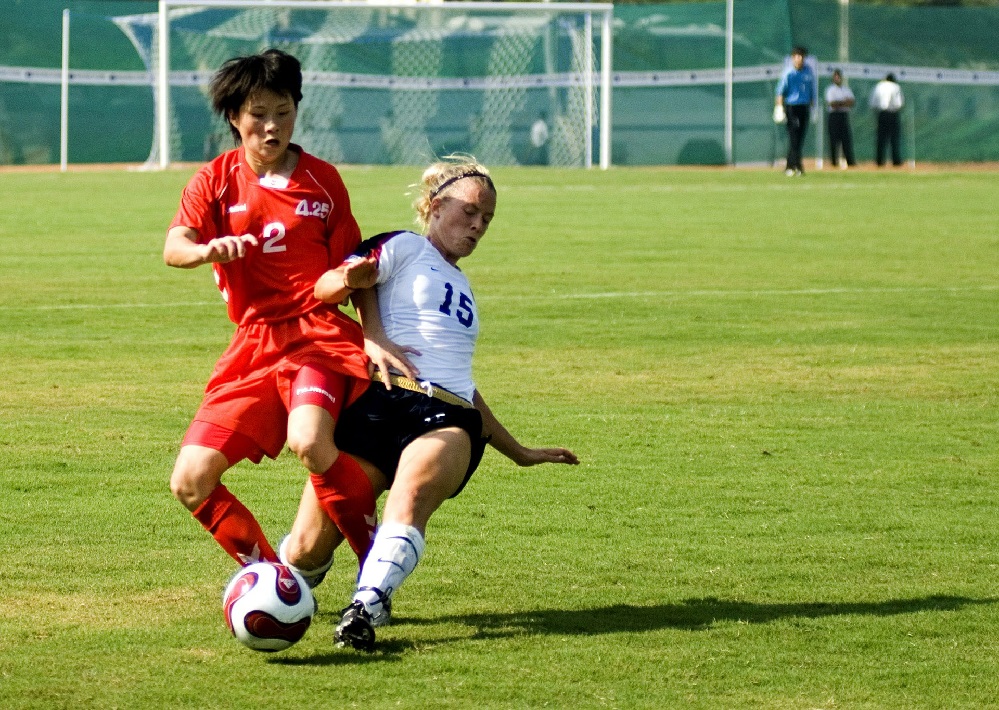The Norwegian men’s football team have just taken a pay cut so that the women’s team can be paid the same wages. But does sport still have more to learn from the human rights model of equality?
The news that the gender wage gap is being addressed by the Norwegian Football Association has rightly been celebrated. It was announced at the end of last week that a collective 6 million kroner (£573,635) will be paid in central contracts to both the men and women’s teams. Previously, the women earned 3.1 million kroner, while the men earned 6.55 million kroner.
However, it’s a model that’s yet to reach the rest of the international community or even some sports, including here in the UK.
Finally, a share of the spoils for female footballers?

Image Credit and Source: The Telegraph (2015); Neymar now earns considerably more than this
Football is an industry that recently had its first £200m person. The average wage for a (male) Premier League player last season was £2.4m a year. Cash has been obnoxiously thrown around like confetti at a parade – to everyone except the women.
The Telegraph asked in 2015 whether Wayne Rooney, earning £300,000 per week, was really 260 times better than his highest-paid female equivalent, Steph Houghton, who earned £35,000 per year. The answer has to be ‘no’.
Is Wayne Rooney really 260 better than his highest-paid female equivalent? The answer has to be no
In 2016, the US Women’s Football team filed a federal complaint accusing US soccer of wage discrimination. Despite sweeping all before them, and winning their third World Cup the year before, they found themselves paid only 40 percent of their male equivalents. The men’s team has never won a World Cup, and did not even qualify for the 2018 World Cup.
Against this backdrop, steps taken by the Norwegian FA set a good example. It follows the recent move of English team Lewes FC who, earlier this year, announced that they would provide an equal budget for their men’s and women’s teams. If this were not football, this would not be seen as revolutionary.
It’s not a football problem, it’s a sports problem

Image Credit: Stefan_Schranz, Pixabay
Well, not entirely. A recent study by the BBC found that 83 percent of sports now pay men and women the same amount in prize money.
Some sports are better than others. Cricket is a bad one – the prize money at the World Twenty20 in 2016 was 16 times higher for the men than it was for the women. Golf is another guilty party. At the US Open this year, the third place male finisher made only $5,000 less than the 2016 women’s winner.
Tennis is often championed as the good guy when it comes to equal pay. Prize money in each grand slam has been equal for men and women since 2007. It’s a matter of equal work for equal pay. In the words of Serena Williams:
If I have a daughter who plays tennis and also have a son that plays tennis, I wouldn’t say that my son deserves more because he is a man. If they both started at three years old I would say they both deserve the same amount of money
A problem bigger than sport
Image Credit: Wgbiebe / Pixabay
The gender pay gap is real. The Office for National Statistics reported last year that average pay for full-time female employees was 9.4% lower than for full-time male employees. Only this year, a scandal emerged as it was reported that nearly 500 BBC employees were “getting paid less than colleagues in a similar role because of their gender”.
Women’s treatment in sport has always been a manifestation of wider gender inequality and, as sports evolved and professionalised, became self-perpetuating.
Quote: Tim Wigmore, the New Statesman
There has also been an historically snobbish attitude to women’s sport. Ruth Holdaway, CEO at Women in Sport, has previously said that there “needs to be a fundamental change within the sports sector itself“. The fundamental changes that are needed, however, are bigger than sport.
How can human rights help?
Image: Pixabay
Non-discrimination between sexes is an important facet of human rights law, enshrined in Article 14 of the Human Rights Convention. Its sister Convention, the European Social Charter, calls on countries “to recognise the right of men and women workers to equal pay for work of equal value” in Article 4. “Equal pay for equal work” is also recognised in Article 7 of the International Covenant on Economic, Social and Cultural Rights.
Football has exercised a huge amount of privilege in exempting itself from this principle. For defenders of the current status quo, this is because sport is fundamentally different. It’s not how hard you work that matters, it’s how many shirts or TV packages you sell. Footballers are products rather than people, and men are just better products.
That’s what we’re told. But as women’s sport becomes increasingly popular, the human rights model has an important role to play in eating away at the gender pay gap. Equal pay for equal work. Football remains a privileged industry, but no amount of privilege can amount to an exception from respecting human rights.









